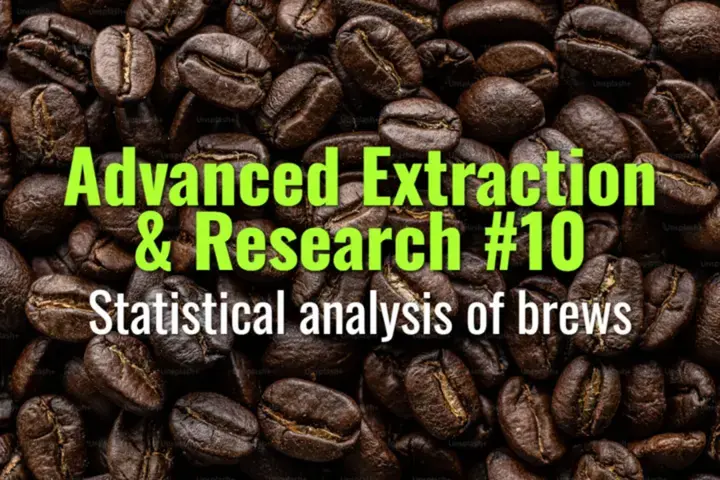Statistical analysis of brews
How to apply statistical analysis to coffee brewing experiments to evaluate consistency, identify trends, and make data-driven improvements.
- Coffee Basics Nerds
- 2 min read
Article 10 of 12 in Advanced Extraction & Research/

Why Use Statistics?
- Coffee brewing produces natural variability.
- Statistics help determine whether observed differences are real effects or just noise.
- Provides confidence in recipe development, QC, and research.
Common Statistical Tools
- Descriptive Statistics:
- Mean, median, standard deviation.
- Used for TDS, EY, or brew time averages.
- Comparative Tests:
- t-test: Compare two recipes (e.g., 92°C vs 96°C water).
- ANOVA: Compare multiple recipes or grind levels.
- Correlation & Regression:
- Show relationships between variables (grind size vs EY).
- Build predictive models.
- Sensory Statistics:
- Triangle test significance.
- Panel calibration and inter-rater reliability.
Practical Example
- Test: Does increasing dose improve sweetness in espresso?
- Method: Brew 3 dose levels (18g, 19g, 20g), measure TDS + sensory scores.
- Analysis:
- Use ANOVA to test differences in TDS and sweetness scores.
- Apply post-hoc tests to see which doses differ.
- Outcome: Identify optimal dose range with statistical support.
Benefits in Coffee Research
- Reduces subjective bias by quantifying results.
- Guides recipe adjustments with evidence.
- Strengthens credibility when publishing findings or training staff.
Tips for Baristas & Roasters
- Keep sample sizes reasonable (≥3–5 repetitions).
- Use simple spreadsheet tools for calculations.
- Combine sensory and instrumental data for robust conclusions.
Summary
Statistical analysis of brews moves coffee experimentation from intuition to data-driven confidence. By applying tests like t-tests, ANOVA, and regression, professionals can validate recipes, minimize variability, and achieve greater consistency and clarity in brewing outcomes.